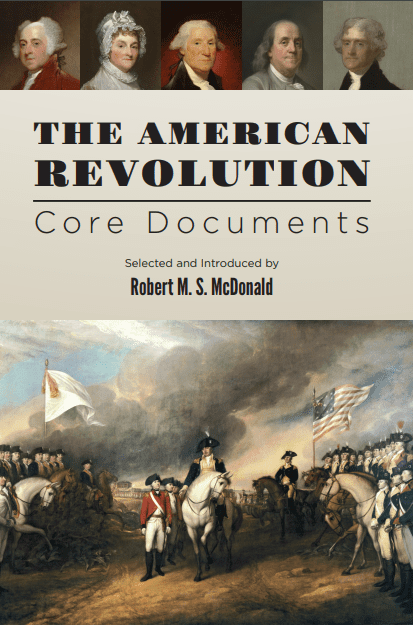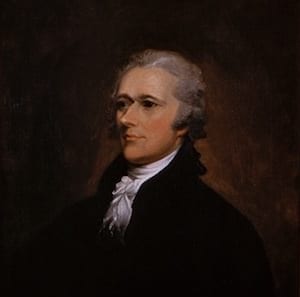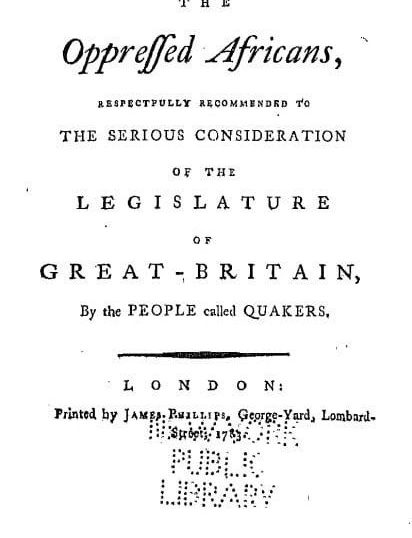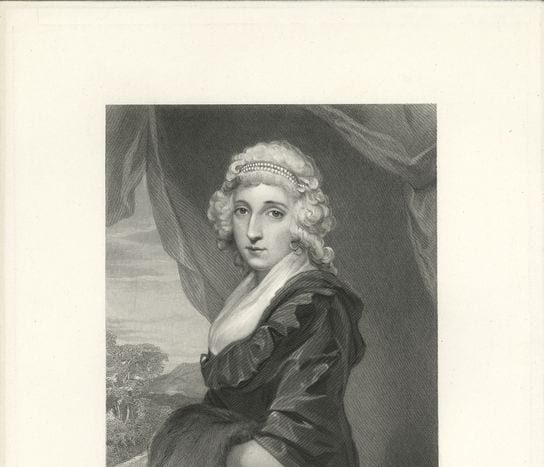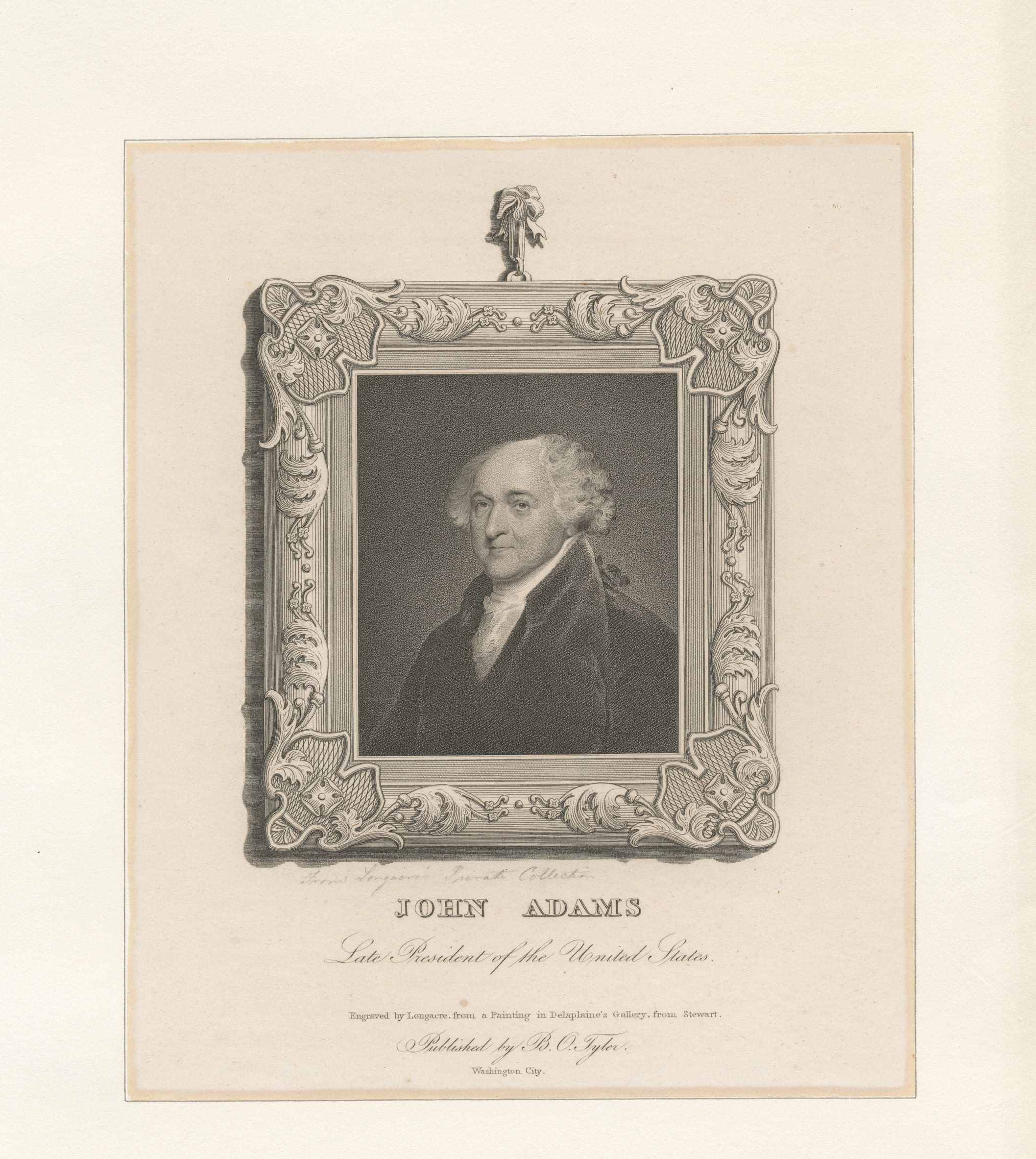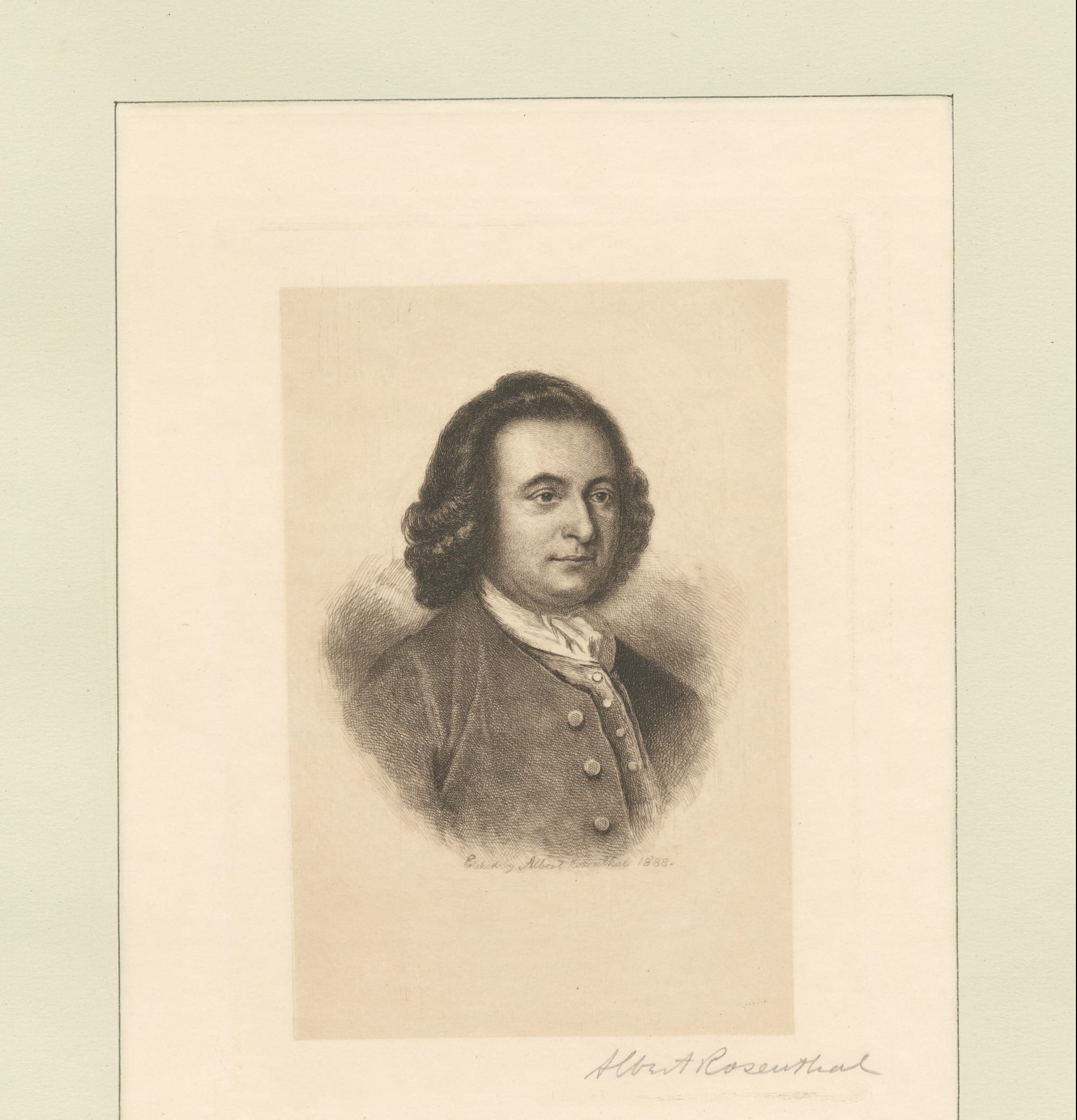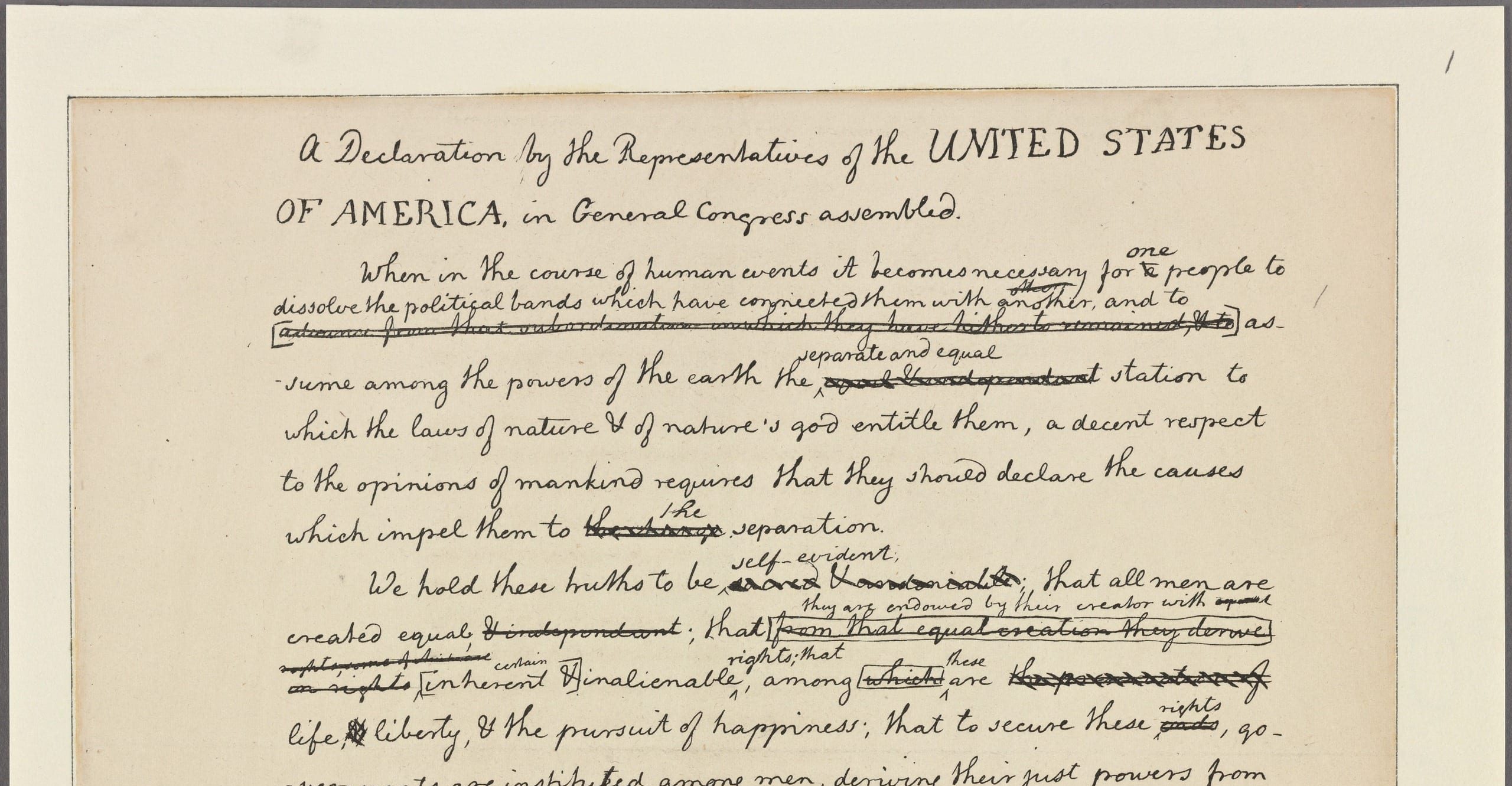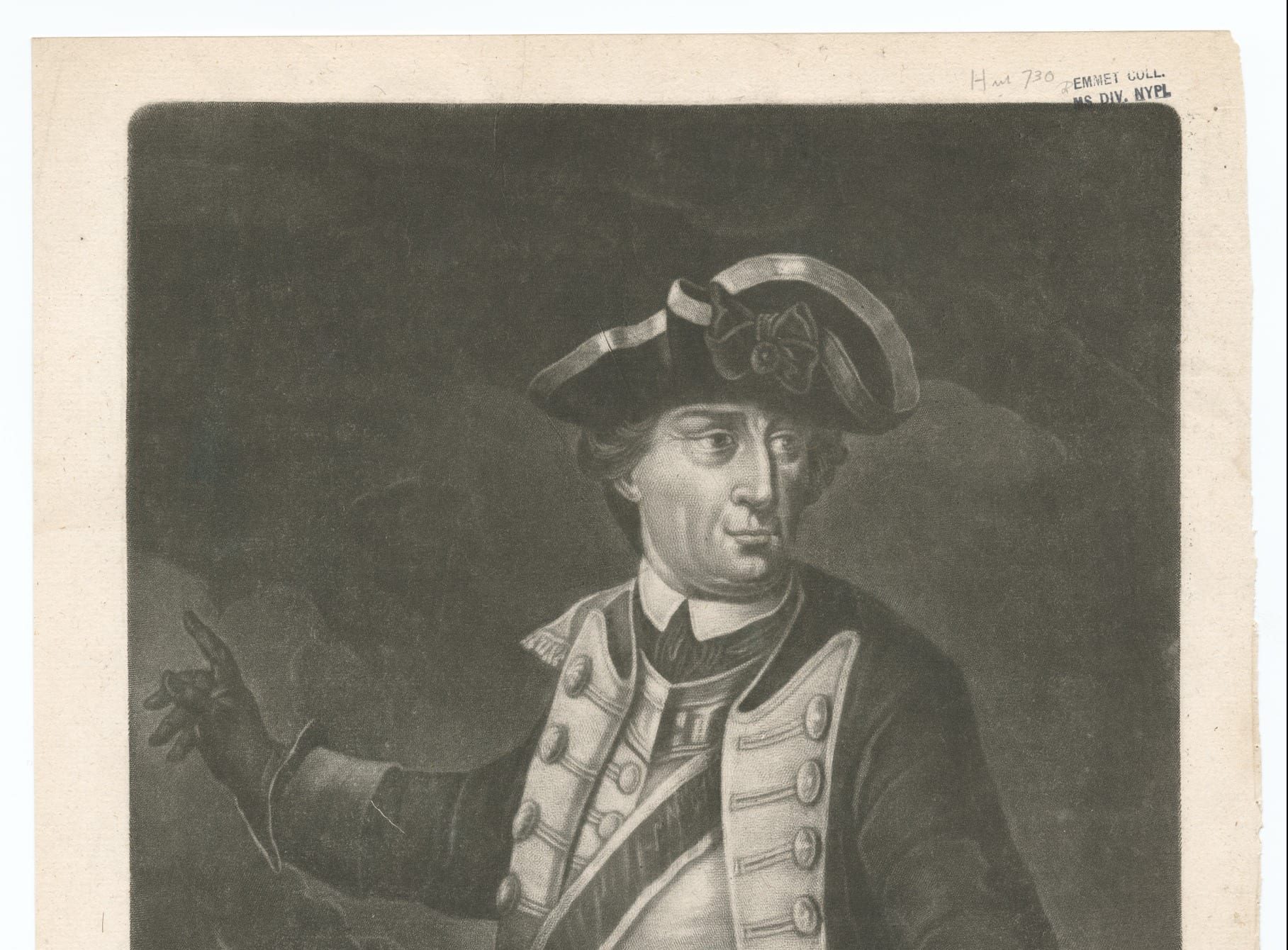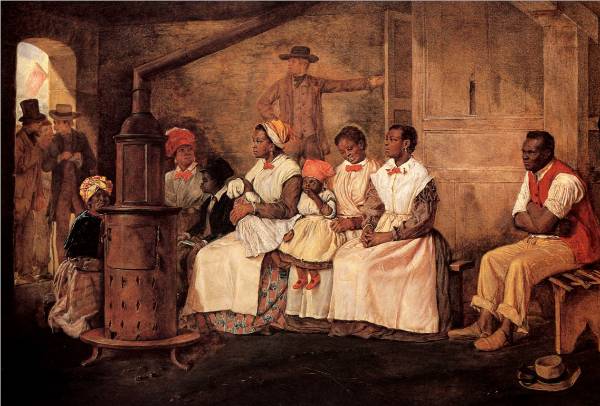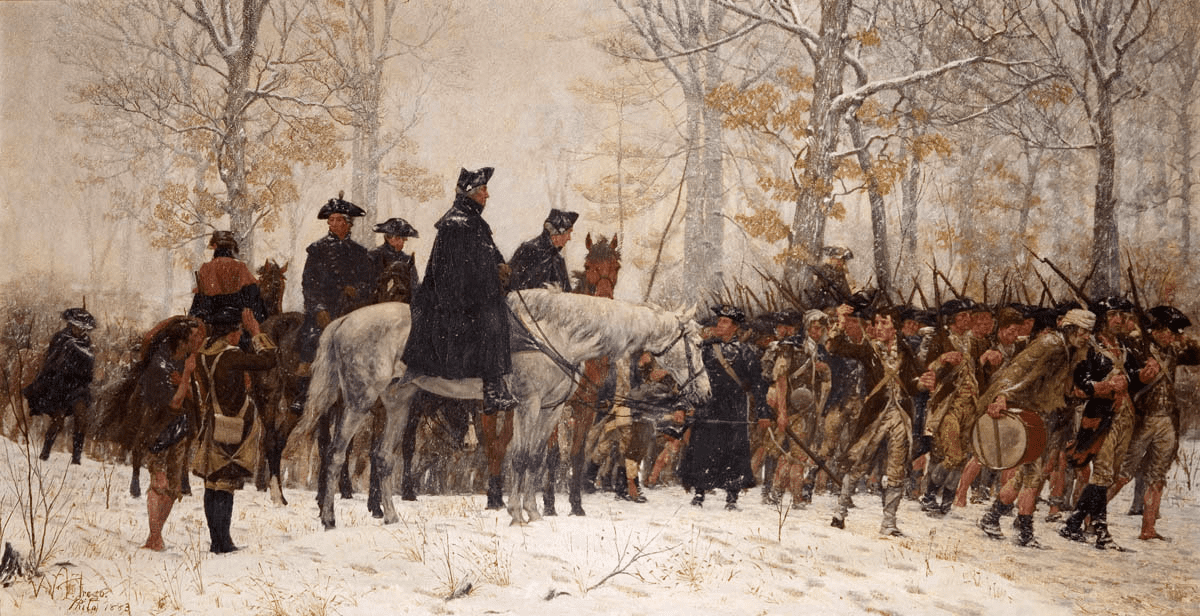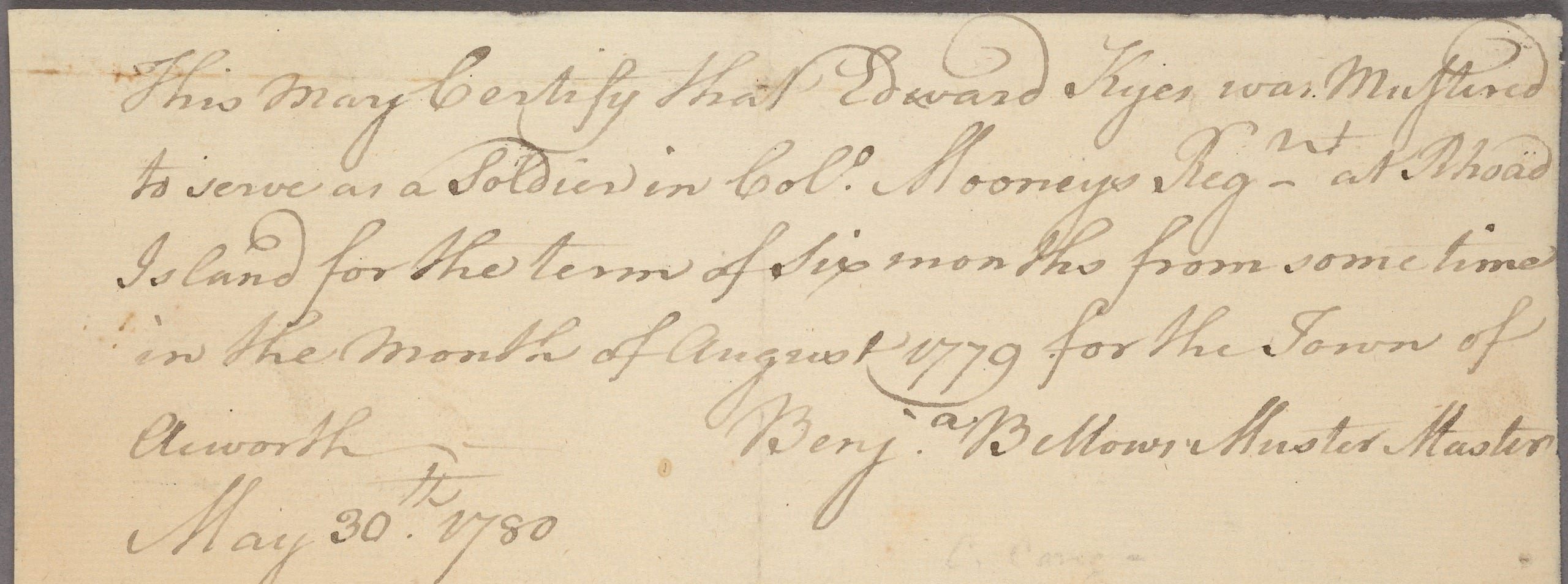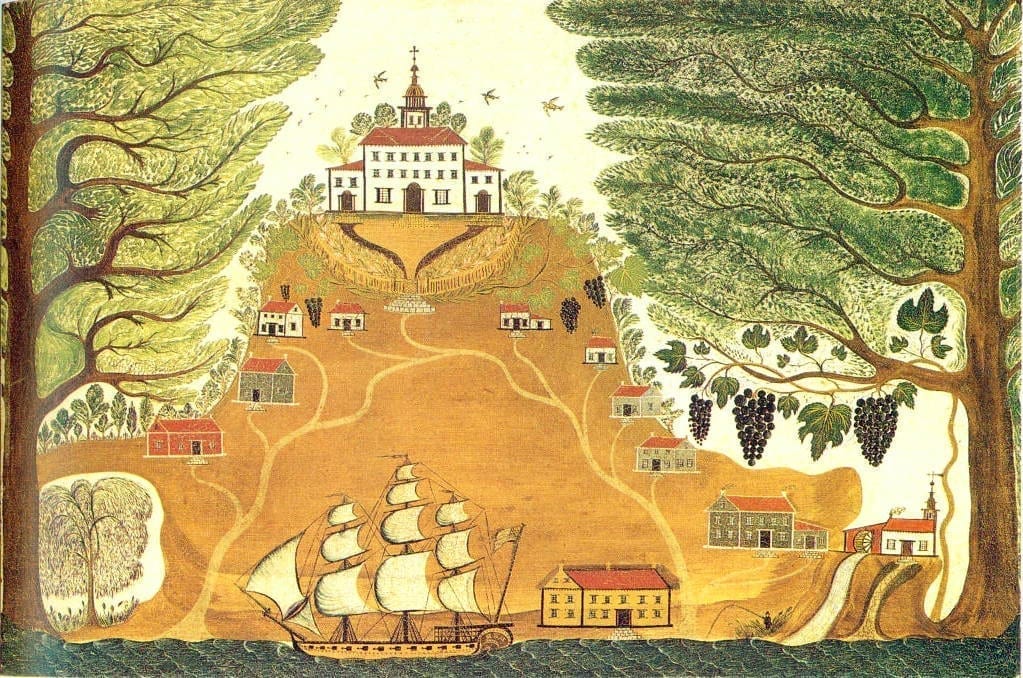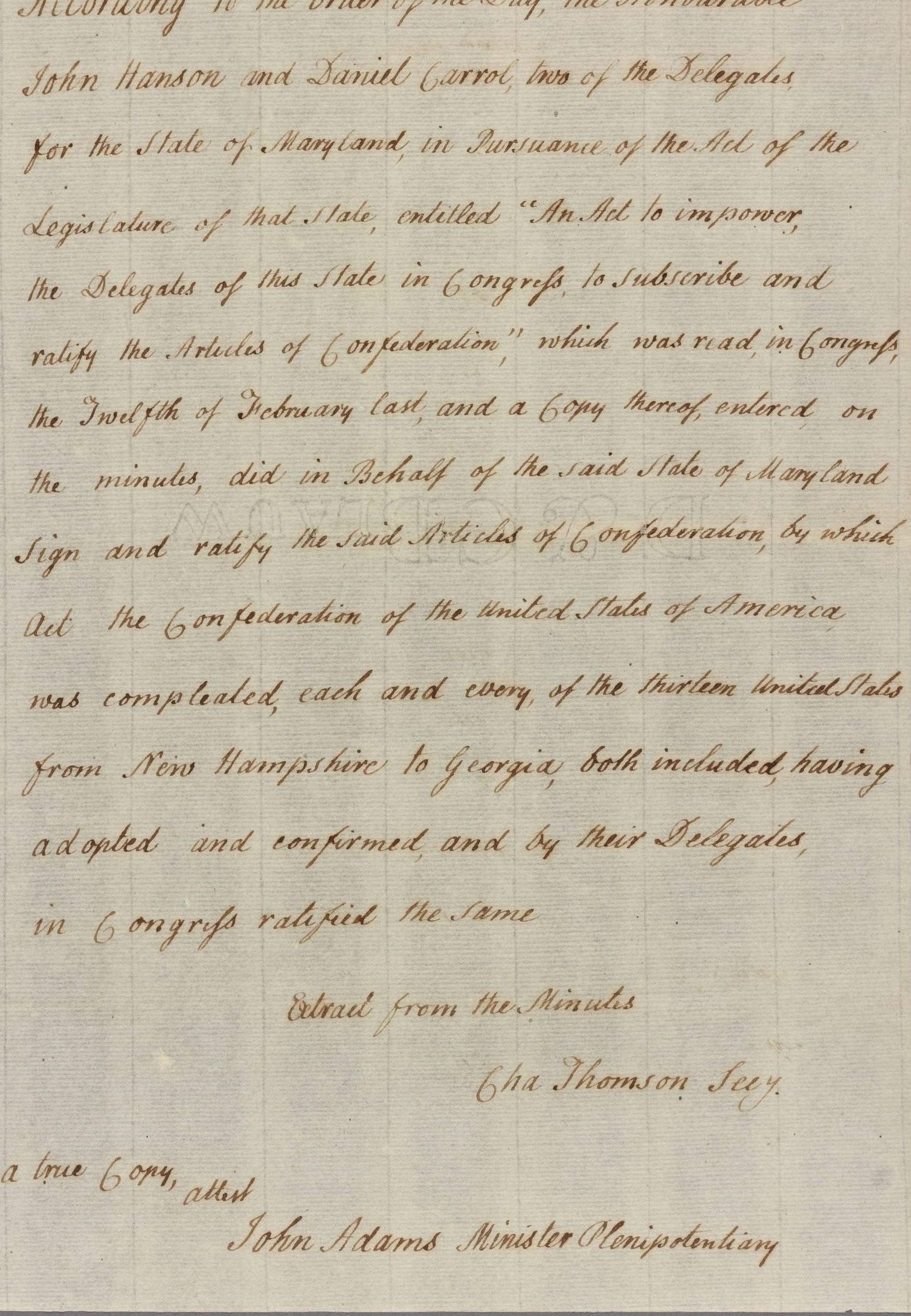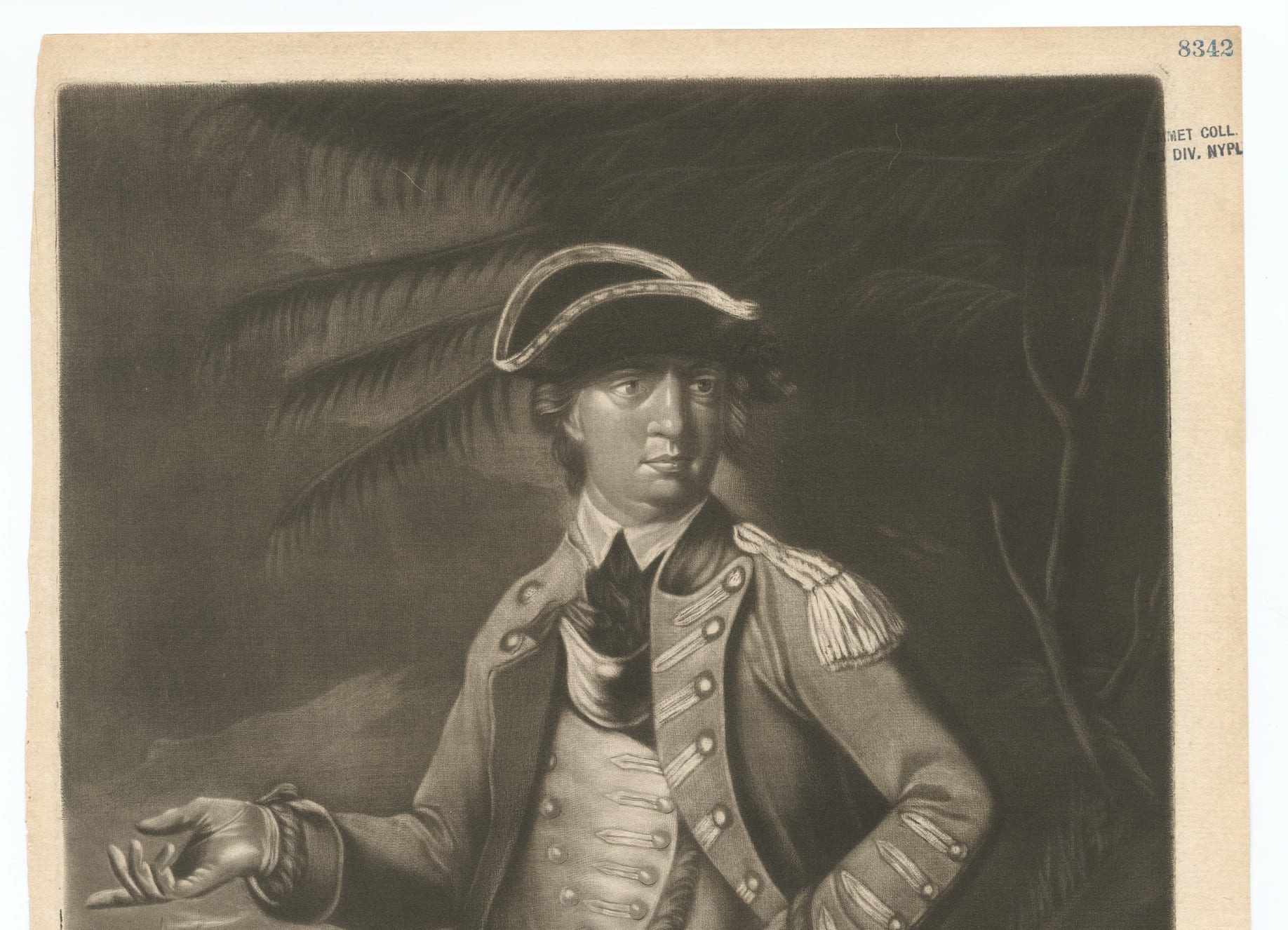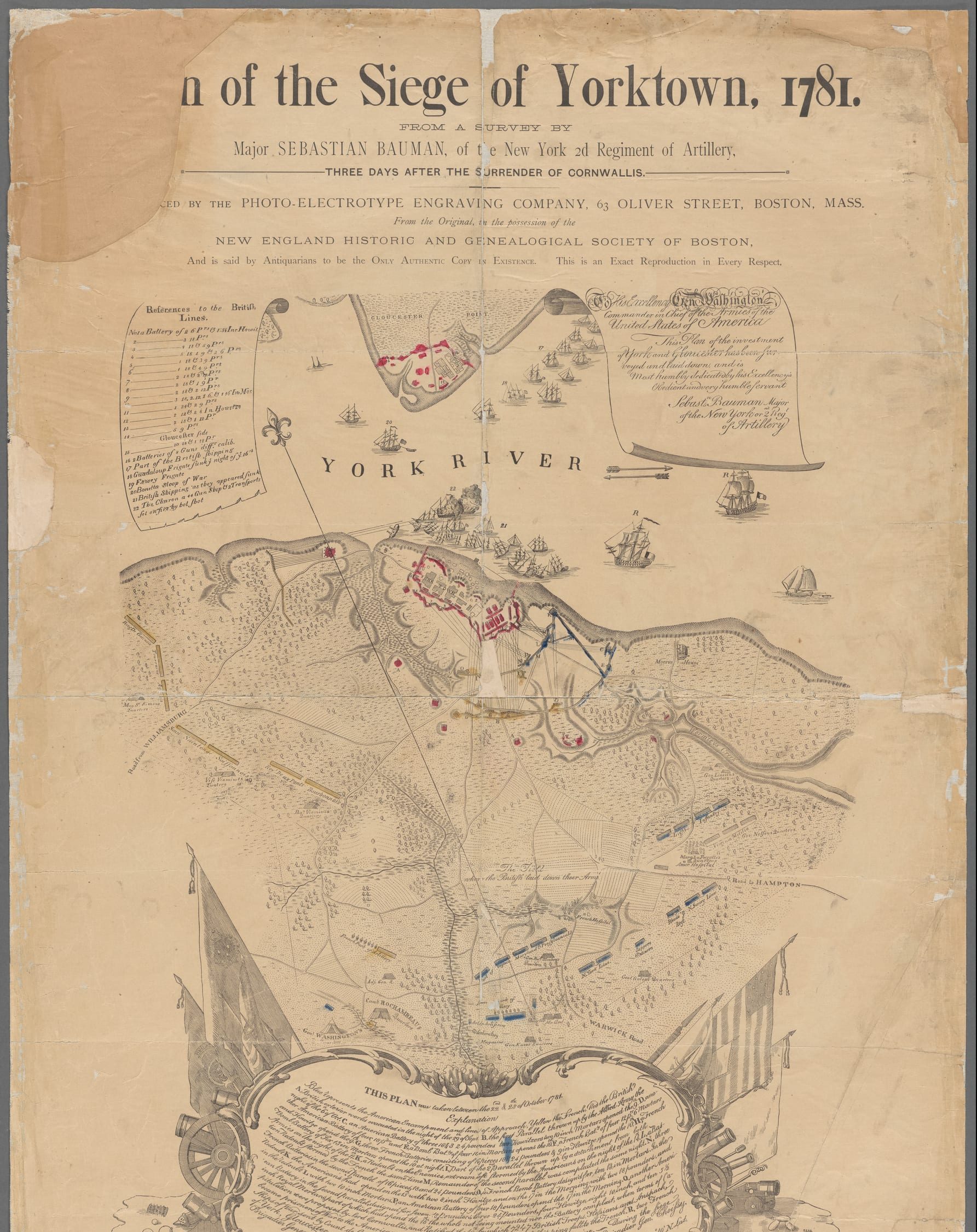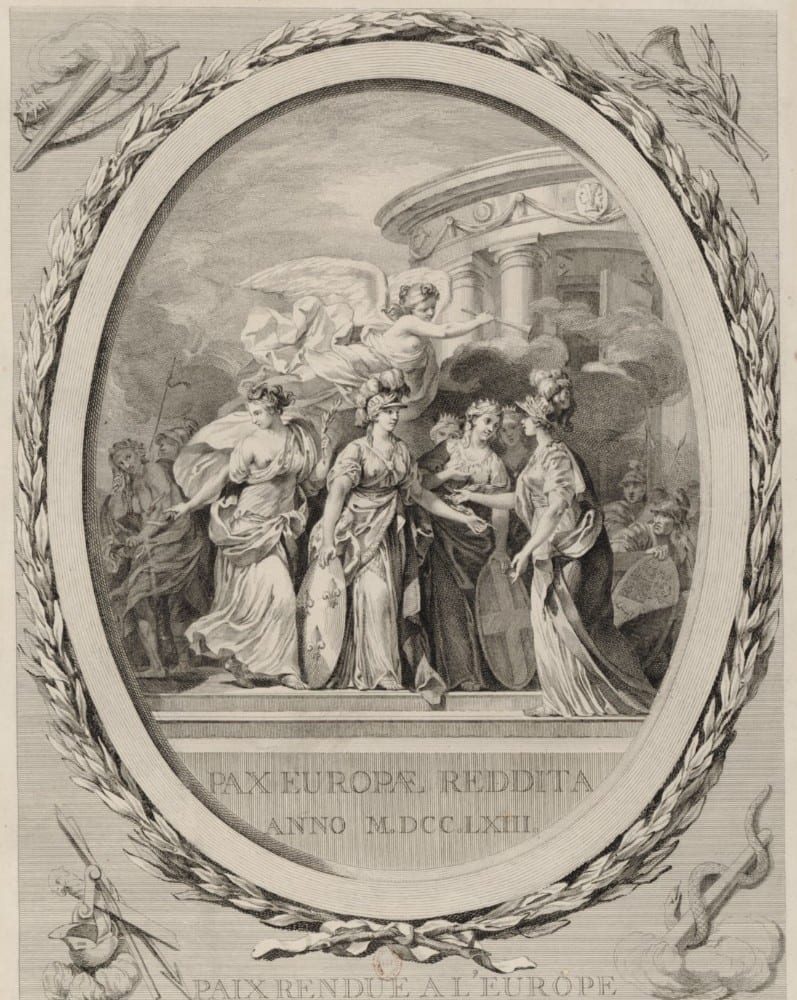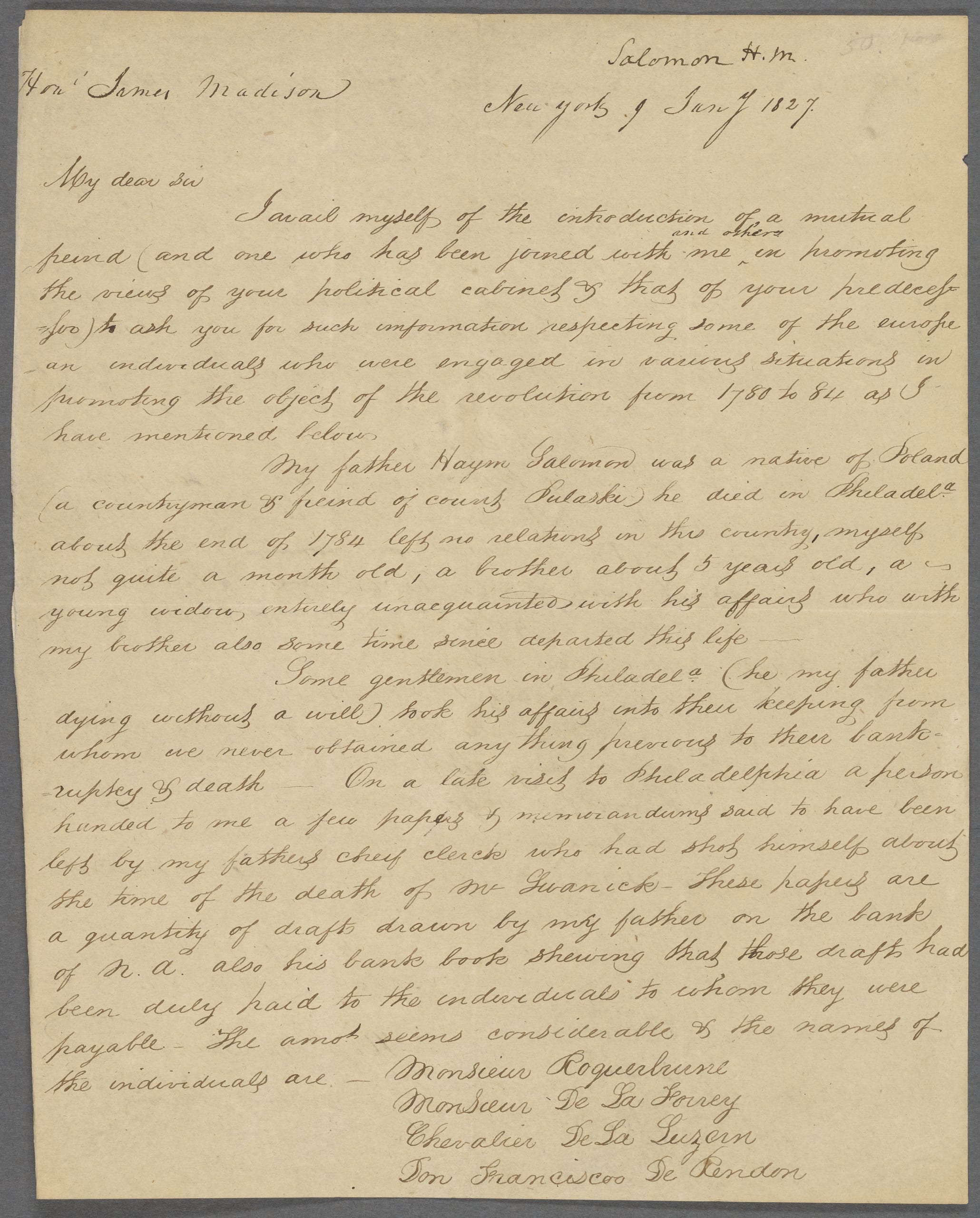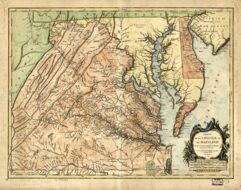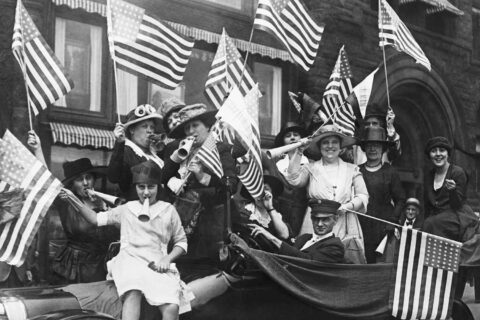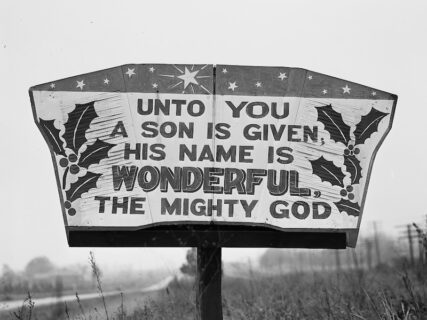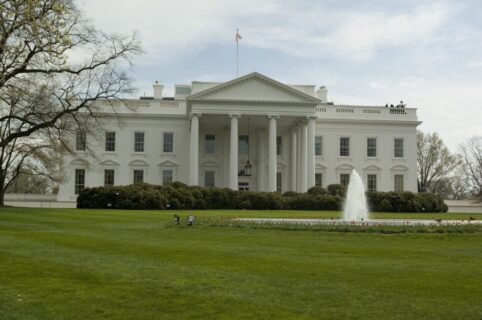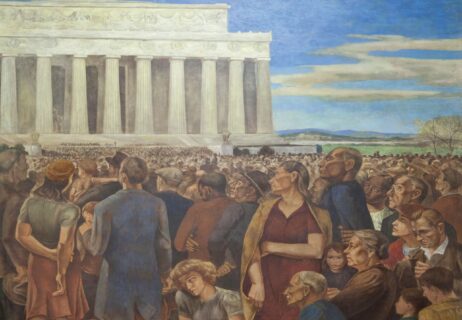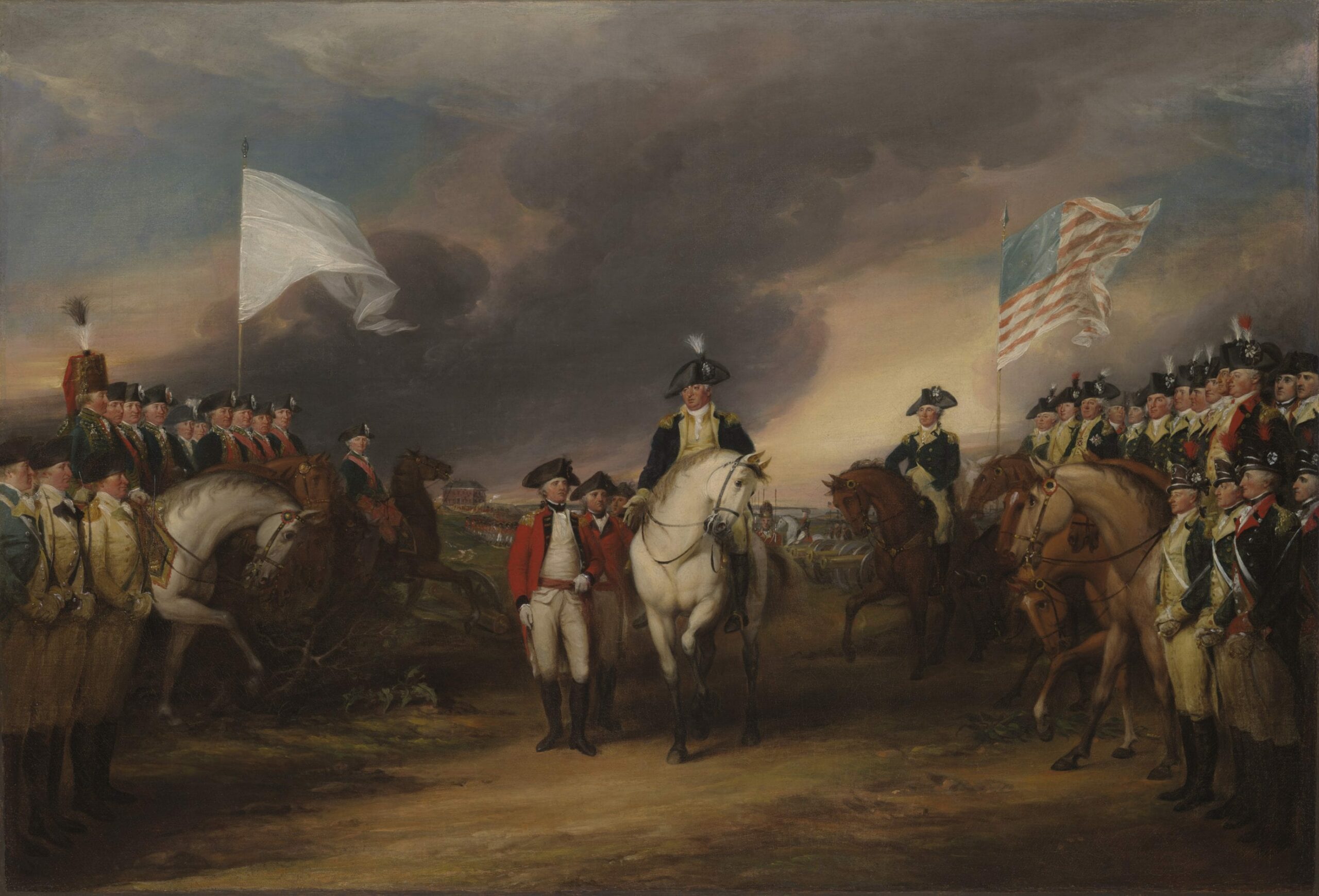
American Revolution
John Adams wrote “What do we mean by the Revolution? The war? That was no part of the Revolution. It was only an effect and consequence of it. The Revolution was in the minds of the people."
Captain John Parker, commander of the Lexington militia, had received Paul Revere’s warning. Great Britain’s Boston-based troops were due to pass through his Massachusetts town on their march to seize gunpowder, ammunition, and artillery pieces in nearby Concord. What Parker could not have known was how those Redcoats would react when, at dawn on April 19, 1775, his men stood in their way. “Don’t fire unless fired upon,” one of his compatriots heard him command, “but if they mean to have a war, let it begin here!”
No one knows who first pulled a trigger, but no one disputes that eight of the nearly eighty Lexington militiamen—vastly outnumbered by several hundred British regulars—lost their lives that morning. Conflict at Concord a few hours later yielded a different outcome. The king’s soldiers found few of the military supplies that had been their objective. Forced into retreat at the Old North Bridge, they began a perilous seventeen-mile journey back to Boston. As thousands of Massachusetts militiamen descended on their route, British casualties mounted. At Menotomy, Massachusetts, 80-year-old Samuel Whittemore stood ready to avenge British aggression with a musket, a pair of pistols, and a sword. As Redcoats marched along the road near his home, he took aim. He downed one British soldier and then another. Dropping his musket, he drew his pistols. He had shot a third Redcoat by the time a detachment of the regulars descended upon him, stabbing him thirteen times with their bayonets and shooting him in the face. As he flailed about with his sword they left him for dead. But Whittemore didn’t die. He lived—for another 18 years. In 1793, he took his last breath as a 98-year-old citizen of the free and independent United States.
Parker’s famous words—“if they mean to have a war, let it begin here”—helped mark the start of what eventually came to be known as the War for Independence. But people have long taken pains to distinguish this war, which concluded with the signing of the 1783 Treaty of Paris, from the less well-defined and potentially farther-reaching American Revolution. As John Adams wrote to Thomas Jefferson in 1815, “What do we mean by the Revolution? The war? That was no part of the Revolution. It was only an effect and consequence of it. The Revolution was in the minds of the people, and this,” Adams insisted, took place “from 1760 to 1775, in the course of fifteen years before a drop of blood was drawn at Lexington.” Although Adams believed that the real revolution had taken place before the war, Philadelphia physician Benjamin Rush, a fellow member of the Continental Congress, insisted that it would continue for years after the fighting had ended. “There is nothing more common,” Rush wrote in 1787, “than to confound the terms of American Revolution with those of the late American war.” But the war and the Revolution were not the same thing. “It remains yet to establish and perfect our new forms of government,” Rush observed, “and to prepare the principles, morals, and manners of our citizens, for those forms of government after they are established and brought to perfection.” This, the real revolution, had only just begun.
This volume features a selection of primary sources spanning 1760 to 1783. Some of these documents give voice to the sometimes competing philosophies of the Revolutionary generation. Others exemplify them. All originate from either the years of the war or the crucial period preceding the conflict, when “the minds of the people,” as Adams wrote, took a decisive turn. Whittemore, a veteran of King George’s War (1744–48) and the French and Indian War (1754–63), before taking aim at Redcoats had risked his life fighting alongside them. Similarly, the vast majority of Americans prior to 1760 felt proud of their British heritage. In the minds of American colonists, what made Britain the richest and most powerful of the world’s nations was the fact that it was also the freest. This, for them, endured as the source of their British patriotism. As philosopher John Locke had explained when justifying the Glorious Revolution of 1688–89, only a government that protected the people’s rights to life, liberty, and property could consider itself legitimate. Soon after the French and Indian War, however, Parliament approved a series of measures that jeopardized colonists’ rights. Americans who resisted Britain’s “long train of abuses and usurpations,” as Jefferson’s Declaration of Independence described it, had struggled to hold their government true to its own avowed principles. Only gradually and reluctantly did the belief that Britain had no intention of keeping its promises push Americans to secure these commitments independent of the British government’s interference. In this sense the American revolutionaries were better Englishmen than their cousins across the Atlantic.
The conflict that commenced when Parker and his men stood their ground at Lexington tested the principles valued most by these once-loyal Britons. How to deal with those who remained loyal to the king? How best to bear the monetary costs? How to recruit and retain for the army men willing not only to defend, at a minute’s notice, their homes and hometowns but also, for multiple years, distant parts of the new United States? Given their love of liberty and the revulsion they felt toward acts of coercion, the War for Independence posed a significant problem. Wars, which necessitate the concentration of force, require the centralization of power. How to defeat (or at least outlast) the world’s most formidable military without creating an army posing a threat to the freedom it aimed to defend?
George Washington probably never wrote that government, “like fire, is a dangerous servant, and a fearsome master,” but the fact that so many have never questioned this quotation’s frequent attribution to him helps to explain his selection as commander of the Continental Army. The members of the Continental Congress recognized in him a multitude of qualifications. He had gained experience as a colonel in the French and Indian War. He possessed relative youth as well as social and physical stature. As a Virginian, he seemed well positioned to transform an army of New Englanders into a truly continental force. Maybe most important, since 1758 he had served in the House of Burgesses. Like them, he was a civilian legislator who understood the importance of civilian control of military power, which, if not properly directed, possessed the greatest potential to consume the people’s liberty. He demonstrated respect for civilian leaders and urged his army’s restraint when dealing with common citizens. Throughout the war, Washington addressed Congress in the most deferential terms. Near the end, he extinguished his officers’ threatened insubordination against this legislative body and the states on whose authority it acted. After the conclusion of peace, Washington’s decision to relinquish power, resign as commander-in-chief, and return to Mount Vernon as a private citizen reportedly prompted even George III to describe him as “the most distinguished of any man living” and “the greatest character of the age.”
It was not just Washington’s willingness to give up power that made the American Revolution a successful struggle for liberty. In addition to exhausting the will of Great Britain to wage war against them, the American revolutionaries transitioned from monarchy and aristocracy to republican government and an emerging spirit of democracy. Embracing representative governments within and among the states, they coalesced around the principles that the people are sovereign and that popular consent is a precondition of political legitimacy. They had also internalized the rich lexicon of individual rights that had formed the basis of both their opposition to British imperial policy and their claim on independence. Yet if the “self-evident” “truths” that “all men are created equal, with certain unalienable rights” bolstered their confidence, at the same time, they troubled their collective conscience. What about women, African Americans, members of religious minorities, and other individuals denied their natural rights to life, liberty, and property? What about people denied civil rights bestowing equality under the law?
It is no coincidence that during the years of the War for Independence, people began to question why rights that were said to belong to all mankind were not recognized as the inheritance of all Americans. But it is also no surprise that the Founders’ generation—the first to notice the conflict between their newly-expanded principles and their practices reflecting deeply-entrenched prejudices—was not the last to struggle to keep the promises of the Declaration of Independence. Even before the war’s conclusion, northern states began either to abolish slavery or to enact plans for gradual emancipation. Soon after, Congress halted the expansion of slavery to parts of the West, and Jefferson, as president in 1807, championed and signed a bill outlawing US participation in the international slave trade.
In the decades to follow, the issue of slavery became even more central. So did the rights of women, and the voting rights of men who did not own land. Even today, in the United States and around the world, oppressed groups and individuals invoke the philosophies of the American Revolution. As Benjamin Rush predicted in 1787, “the American war is over, but this is far from being the case with the American Revolution. On the contrary, nothing but the first act of the great drama is closed.”
In some ways the Revolution would extend far beyond the conclusion of the War for Independence. A few days prior to the fiftieth anniversary of the adoption of his Declaration, Thomas Jefferson observed that “all eyes are opened, or opening, to the rights of man.” He expressed his faith that the decision of the Continental Congress to separate from Great Britain would continue to inspire people “to burst the chains under which monkish ignorance and superstition had persuaded them to bind themselves, and to assume the blessings and security of self-government.” Awakening the world to the proposition that “the mass of mankind has not been born with saddles on their backs, nor a favored few booted and spurred, ready to ride them, legitimately, by the grace of God,” the ideas of the American Revolution could eventually bring liberty to everyone, everywhere, not only in the United States but also around the globe. The freedom for which Americans had stood their ground would come “to some parts sooner” and “to others later.” But eventually, Jefferson predicted, real liberty would one day be enjoyed by all.
Acknowledgements: A number of friends either suggested documents included in this collection or tracked down information helping me to contextualize them. I am grateful for the assistance of Jeremy Bailey, Veronica Burchard, Benjamin Carp, Mickey Craig, Joe Dooley, Todd Estes, Mary-Jo Kline, Stuart Leibiger, Melanie Miller, Rob Parkinson, Richard Samuelson, and Brian Steele. Sean Sculley performed both these tasks and also reviewed all of the documents’ introductions. Sarah Morgan Smith, who served as series editor, lent her considerable expertise to the selection of documents and execution of the finished product. Caleb Cage helped to deepen my appreciation for people who, in the midst of war, share their stories for the benefit of others, present and future. Jefferson McDonald and Grace McDonald helped select illustrations. Christine Coalwell McDonald, a historian in her own right, offered unfailing encouragement and assisted in every way possible.
Economics
- John Dickinson, “Letters from a Farmer in Pennsylvania, No. 2”
- Charleston Nonimportation Agreement
- “An Impartial Observer,” An Account of the Boston Tea Party
- Gouverneur Morris, “We Shall be under the Domination of a Riotous Mob”
- Thomas Jefferson, A Summary View of the Rights of British America
- The Association Enacted by the First Continental Congress
- John Dickinson and Thomas Jefferson, Declaration of the Causes and Necessity of Taking Up Arms
- Thomas Paine, Common Sense
- Abigail and John Adams, “Remember the Ladies”
- Thomas Jefferson, Draft of the Declaration of Independence
- Private Joseph Plumb Martin, Foraging for Valley Forge
- Thomas Jefferson, Notes on the State of Virginia
- George Washington, Circular Letter to the States
- Treaty of Paris
Individual Rights
- James Otis, Speech Against Writs of Assistance
- James Otis, “Rights of the British Colonies Asserted and Proved”
- Samuel Adams, “The Rights of the Colonists”
- The Association Enacted by the First Continental Congress
- “Friend to America” (Alexander Hamilton), The Farmer Refuted
- John Dickinson and Thomas Jefferson, Declaration of the Causes and Necessity of Taking Up Arms
- Lancaster County Committee of Correspondence and Observation, Resolution Regarding Quaker Pacifists
- Thomas Paine, Common Sense
- Abigail and John Adams, “Remember the Ladies”
- George Mason, Virginia Declaration of Rights
- Thomas Jefferson, Draft of the Declaration of Independence
- John Laurens, Envisioning an African American Regiment
- Treaty of Paris
- Petition of the Philadelphia Synagogue to the Council of Censors of Pennsylvania
Divisions of Political Power
- James Otis, “Rights of the British Colonies Asserted and Proved”
- Resolutions of the Stamp Act Congress
- John Dickinson, “Letters from a Farmer in Pennsylvania, No. 2”
- Thomas Jefferson, A Summary View of the Rights of British America
- Joseph Galloway, Plan of Union
- John Adams, Thoughts on Government
- George Mason, Virginia Declaration of Rights
- Thomas Jefferson, Draft of the Declaration of Independence
- Articles of Confederation
- George Washington, The Newburgh Address
- Captain Samuel Shaw, An Officer’s Account of Washington’s Remarks
- George Washington, Circular Letter to the States
- Treaty of Paris
- George Washington, Cincinnatus Reborn
The Purpose of Government
- James Otis, “Rights of the British Colonies Asserted and Proved”
- Samuel Adams, “The Rights of the Colonists”
- Thomas Jefferson, A Summary View of the Rights of British America
- John Dickinson and Thomas Jefferson, Declaration of the Causes and Necessity of Taking Up Arms
- Thomas Paine, Common Sense
- John Adams, Thoughts on Government
- George Mason, Virginia Declaration of Rights
- Thomas Jefferson, Draft of the Declaration of Independence
The Process of Government
- James Otis, Speech Against Writs of Assistance
- James Otis, “Rights of the British Colonies Asserted and Proved”
- Resolutions of the Stamp Act Congress
- John Dickinson, “Letters from a Farmer in Pennsylvania, No. 2”
- Thomas Jefferson, A Summary View of the Rights of British America
- Joseph Galloway, Plan of Union
- Abigail and John Adams, “Remember the Ladies”
- John Adams, Thoughts on Government
- George Mason, Virginia Declaration of Rights
- Thomas Jefferson, Draft of the Declaration of Independence
- Articles of Confederation
- Thomas Jefferson, Notes on the State of Virginia
- George Washington, The Newburgh Address
- Captain Samuel Shaw, An Officer’s Account of Washington’s Remarks
- George Washington, Circular Letter to the States
- Petition of the Philadelphia Synagogue to the Council of Censors of Pennsylvania
- George Washington, Cincinnatus Reborn
Created Equal
- Charleston Nonimportation Agreement
- Thomas Jefferson, A Summary View of the Rights of British America
- The Association Enacted by the First Continental Congress
- Stratford, Connecticut’s Thomas Gage—and Monmouth County, New Jersey’s Dunmore
- Abigail and John Adams, “Remember the Ladies”
- Thomas Jefferson, Draft of the Declaration of Independence
- Generals Gates and Burgoyne on the Murder of Jane McCrea
- John Laurens, Envisioning an African American Regiment
- Private Joseph Plumb Martin, Foraging for Valley Forge
- Franklin and Lafayette, List of Prints to Illustrate British Cruelties
- Eliza Wilkinson Encounters Redcoats in South Carolina
- Thomas Jefferson, Notes on the State of Virginia
- Treaty of Paris
Loyalists
- Joseph Galloway, Plan of Union
- A. W. Farmer (Reverend Samuel Seabury), A View of the Controversy Between Great-Britain and her Colonies
- Stratford, Connecticut’s Thomas Gage—and Monmouth County, New Jersey’s Dunmore
- Thomas Paine, The American Crisis
- Private Hugh McDonald, The Continentals Encounter Civilians
- Generals Gates and Burgoyne on the Murder of Jane McCrea
- Franklin and Lafayette, List of Prints to Illustrate British Cruelties
- “Plain Truth,” “To the Traitor General Arnold”
- Treaty of Paris
Uniting Americans
- Charleston Nonimportation Agreement
- Deacon John Tudor, Account of the Boston Massacre
- Gouverneur Morris, “We Shall be under the Domination of a Riotous Mob”
- Philadelphia Welcomes the First Continental Congress (September 16, 1774)
- The Association Enacted by the First Continental Congress
- A. W. Farmer (Reverend Samuel Seabury), A View of the Controversy Between Great-Britain and her Colonies
- “Friend to America” (Alexander Hamilton), The Farmer Refuted
- John Dickinson and Thomas Jefferson, Declaration of the Causes and Necessity of Taking Up Arms
- Lancaster County Committee of Correspondence and Observation, Resolution Regarding Quaker Pacifists
- Thomas Paine, Common Sense
- Stratford, Connecticut’s Thomas Gage—and Monmouth County, New Jersey’s Dunmore
- Thomas Jefferson, Draft of the Declaration of Independence
- Celebrations of American Independence in Boston and Watertown, Massachusetts
- Thomas Paine, The American Crisis
- Private Hugh McDonald, The Continentals Encounter Civilians
- Generals Gates and Burgoyne on the Murder of Jane McCrea
- Franklin and Lafayette, List of Prints to Illustrate British Cruelties
- “Plain Truth,” “To the Traitor General Arnold”
- George Washington, Circular Letter to the States
War or Peace?
- A. W. Farmer (Reverend Samuel Seabury), A View of the Controversy Between Great-Britain and her Colonies
- “Friend to America” (Alexander Hamilton), The Farmer Refuted
- Patrick Henry, “Give me liberty or give me death!”
- Account of the Battles of Lexington and Concord
- John Dickinson and Thomas Jefferson, Declaration of the Causes and Necessity of Taking Up Arms
- Thomas Jefferson, Draft of the Declaration of Independence
- Treaty of Paris
Military Operations
- John Andrews, Account of the Battles of Lexington and Concord
- John Dickinson and Thomas Jefferson, Declaration of the Causes and Necessity of Taking Up Arms
- Thomas Paine, The American Crisis
- Private Hugh McDonald, The Continentals Encounter Civilians
- Generals Gates and Burgoyne on the Murder of Jane McCrea
- Private Joseph Plumb Martin, Foraging for Valley Forge
- John Laurens, Envisioning an African American Regiment
- Franklin and Lafayette, List of Prints to Illustrate British Cruelties
- Eliza Wilkinson Encounters Redcoats in South Carolina
- “Plain Truth,” “To the Traitor General Arnold”
- Dr. James Thacher, Account of the British Surrender at Yorktown
- George Washington, The Newburgh Address
- Captain Samuel Shaw, An Officer’s Account of Washington’s Remarks
- George Washington, Circular Letter to the States
- Treaty of Paris
- George Washington, Cincinnatus Reborn
Reliance on Divine Providence
- James Otis, “Rights of the British Colonies Asserted and Proved”
- Patrick Henry, “Give me liberty or give me death!”
- Lancaster County Committee of Correspondence and Observation, Resolution Regarding Quaker Pacifists
- Thomas Jefferson, Draft of the Declaration of Independence
- Thomas Paine, The American Crisis
- Private Joseph Plumb Martin, Foraging for Valley Forge
- George Washington, Circular Letter to the States
- Treaty of Paris
- Petition of the Philadelphia Synagogue to the Council of Censors of Pennsylvania
- George Washington, Cincinnatus Reborn
The People Mobilize
- Deacon John Tudor, Account of the Boston Massacre
- Account of the Boston Tea Party
- Gouverneur Morris, “We Shall be under the Domination of a Riotous Mob”
- Philadelphia Welcomes the First Continental Congress
- John Andrews, Account of the Battles of Lexington and Concord
- Stratford, Connecticut’s Thomas Gage—and Monmouth County, New Jersey’s Dunmore
- Thomas Jefferson, Draft of the Declaration of Independence
- Celebrations of American Independence in Boston and Watertown, Massachusetts
- Private Joseph Plumb Martin, Foraging for Valley Forge
- John Laurens, Envisioning an African American Regiment
- Eliza Wilkinson Encounters Redcoats in South Carolina
- Thomas Jefferson, Notes on the State of Virginia
For each of the Documents in this collection, we suggest below in section 1 questions relevant for that document alone and in Section 2 questions that require comparison with other documents.
James Otis, Speech Against Writs of Assistance (February 24, 1761)
- Why did the principle that “a man’s house is his castle” cause James Otis to oppose writs of assistance? Why was this principle important to the preservation of individual liberty? How did it limit the powers of government?
- How were the principles for which Otis took a stand protected in the US Constitution and Bill of Rights?
James Otis, “Rights of the British Colonies Asserted and Proved” (July 1764)
- What is the basis of James Otis’s assertion that taxation without representation is wrong?
- In what ways were Otis’s 1764 “Rights of the British Colonies” and his 1761 speech against writs of assistance similar? In what ways were they different? Compare and contrast the arguments and evidence these documents use to assert their points.
Resolutions of the Stamp Act Congress (October 19, 1765)
- What were the Stamp Act Congress’s practical objections to the Stamp Act? What important constitutional principle did the Congress believe the Stamp Act violated?
- According to the arguments of James Otis in 1761 and 1764 and the Stamp Act Congress, what were the principles that limited the authority of Parliament?
“Letters from a Farmer in Pennsylvania, No. 2” (December 10, 1767)
- What, according to Dickinson, limited Parliament’s power—and why? What did Dickinson think would happen if colonists acquiesced to the Townshend Acts?
- Compare Dickinson’s argument here with his work in behalf of the Stamp Act Congress. Which argument better undermined the authority of Parliament?
Charleston Nonimportation Agreement (July 22, 1769)
- What was the stated purpose of this agreement? In what other ways might this agreement have worked to bolster Americans’ resistance to Britain’s imperial policies?
- How does this agreement complement and complicate the assertion of James Otis that “a man’s house is his castle”?
Deacon John Tudor, Account of the Boston Massacre (March 1770)
- In what specific ways did John Tudor’s account of the Boston Massacre differ from what appears to have actually happened? What might explain these differences? Did Tudor’s understanding of the incident make the British soldiers seem more or less blameworthy?
- Compare and contrast the roles of colonists in upholding nonimportation agreements with the role played by Americans in the Boston Massacre and its aftermath. To what extent was unity important in both situations, and in what ways was it encouraged?
Samuel Adams, “The Rights of the Colonists” (November 20, 1772)
- How does Samuel Adams make clear the connection between his argument and the principles of John Locke’s Two Treatises of Government, which explained the legitimacy of the reign of William and Mary? In what ways does highlighting this connection make Adams’s assertions more convincing and less easily dismissed?
- In what ways is the premise of Adams’s argument similar to and different from James Otis’s in his Speech against Writs of Assistance?
“An Impartial Observer,” An Account of the Boston Tea Party (December 1773)
- Just how impartial was the “Impartial Observer”? How did this writer describe the group of Massachusetts residents who met to discuss the situation at Griffin’s Wharf? Why might this writer have considered it important to record this description?
- The Boston Tea Party involved the destruction of about 90,000 pounds of tea—all of it privately owned. Should the actions of participants in the Tea Party be understood as a departure from a commitment to property rights, or somehow as an affirmation of them? Use the following documents:
Gouverneur Morris, “We Shall be under the Domination of a Riotous Mob” (May 20, 1774)
- Although opposed to British policies such as the Coercive Acts, Gouverneur Morris was also opposed to direct democracy. What did he seem to believe was a better means for securing individual liberty? What were the strengths and weaknesses of the alternative favored by Morris?
- Morris dismissed common people who “roared out liberty, and property, and religion … which everyone thought he understood, and was egregiously mistaken.” In what ways does the account of the Boston Tea Party support Morris’s assertion that regular people knew slogans but failed to comprehend the principles they were meant to convey? In what ways does the account contradict Morris’s claim?
Thomas Jefferson, A Summary View of the Rights of British America (July 1774)
- What was the basis for Jefferson’s assertion that “the British Parliament has no right to exercise authority over us”? Was his argument compelling? Why or why not?
- Like Jefferson’s Summary View, Samuel Adams’s “The Rights of the Colonists” bases its argument, in part, on English history. Which moments in time attract their attention? Given their somewhat different assertions and audiences, why did certain episodes in history attract Adams while others attracted Jefferson?
Philadelphia Welcomes the First Continental Congress (September 16, 1774)
- When Philadelphians welcomed members of Congress on September 16, they were extending their hospitality. Did the festivities on that day serve any other purposes? What were they?
- Compare and contrast this account with Gouverneur Morris’s description of a Patriot meeting in New York City. In which location did the “spirit of the English Constitution” (as Morris referred to it) manifest itself most clearly? Why?
Joseph Galloway, Plan of Union (September 28, 1774)
- Had Galloway’s Plan of Union been adopted by the colonies and approved by the British, how effectively would it have protected colonists’ rights and colonies’ capacity for self-government?
- Compare and contrast the constitutional visions of Galloway and Thomas Jefferson. How did Galloway’s understanding of the colonies’ political relationship with Britain differ from Jefferson’s?
The Association Enacted by the First Continental Congress (October 20, 1774)
- In what ways did the Continental Association go beyond the halting of trade with the British empire to minimize distinctions between members of the resistance who were financially well off and those who were not?
- Compare and contrast the Continental Association with Charleston’s 1769 Nonimportation Agreement. In terms of its means and ends, was the Continental Association more or less radical? How did the Association differ from Charleston’s Nonimportation Agreement in its approach to the slave trade?
- What did Samuel Seabury predict would happen if colonists allowed the Continental Congress to escalate their resistance to Great Britain? How sound were the reasons on which he based his prediction?
- Why did Seabury consider the Continental Association’s plan to cease the importation and consumption of British goods as well as American exports to Britain unfair and unwise?
“Friend to America” (Alexander Hamilton), The Farmer Refuted, (February 23, 1775)
- How and why did Alexander Hamilton’s suggestion that Boston, and maybe all the colonies, had been plunged into a “state of nature” by the Coercive Acts undermine the legitimacy of British rule?
- How effectively did Hamilton refute Samuel Seabury’s argument that the Continental Congress lacked legitimacy?
Patrick Henry, “Give me liberty or give me death!” (March 23, 1775)
- Why did Patrick Henry say that attempts to reconcile the colonies with Great Britain were pointless? Why did he think that “chains and slavery” were the only alternatives to war?
- Compare Patrick Henry’s argument to Alexander Hamilton’s, which was written only one month earlier. How do they differ in terms of reasoning and evidence? Which is more compelling? Which was more radical?
John Andrews, Account of the Battles of Lexington and Concord (April 20, 1775)
- Military conflict is sometimes characterized as an attempt to use force to intimidate the enemy into submission. Other times the use of force is carefully calibrated to avoid alienating people and turning those who might be friends into enemies. Given Andrews’s account, which of these strategies did the British employ on April 19? How well did the redcoats achieve their objective?
- Compare and contrast the ways in which the people of Boston and nearby communities prepared and organized themselves during the 1770 Boston Massacre, the 1773 Boston Tea Party, and the 1775 Battles of Lexington and Concord. Which likely did more to influence the outcomes of these events: preparation and organization, or other factors that could not have been anticipated?
- In what ways was this declaration by the Continental Congress less than, equal to, and more than a formal declaration of war against Great Britain? In which of these capacities did it serve the most valuable purpose?
- Compare and contrast the arguments advanced by Dickinson and Jefferson with those employed by Patrick Henry. How and why are these arguments in some ways similar? How and why are they in some ways different?
- In what ways did the Lancaster County Committee of Correspondence and Observation balance the belief that all needed to do their part to resist British aggression with a recognition of Quakers’ sincere pacifism? How well did it succeed?
- The Lancaster County Committee of Correspondence and Observation sought to advance “the protection of America and this colony” while also respecting Quakers’ religious freedom. Given colonists’ principles and circumstances, did this group of Pennsylvanians do better or worse in its attempt to reconcile the good of the many with the rights of individuals than members of Congress who in 1774 approved the Continental Association?
Thomas Paine, Common Sense (January 1776)
- What accounts for the popularity of Common Sense? Was it what Paine argued for, the way in which he conveyed his argument, or some combination of these factors?
- Compare Paine’s assertions about monarchy and the British monarch with the way in which Dickinson and Jefferson address the king. What accounts for the difference?
Stratford, Connecticut’s Thomas Gage—and Monmouth County, New Jersey’s Dunmore (May 30, 1776)
- Why did the New-England Chronicle, a Patriot newspaper, decide to circulate news of Loyalists naming babies after Thomas Gage and Lord Dunmore? Were these accounts more likely to embolden Loyalists or solidify support for colonists resisting British rule?
- Gouverneur Morris worried that resistance to British authority was unleashing mob rule and mob violence. Did the actions of Stratford’s “petticoat army” confirm or contradict his fears?
Abigail and John Adams, “Remember the Ladies” (March 31–May 26, 1776)
- On what different principles did Abigail and John Adams base their different assertions? Why were these principles in conflict? Must these principles always be in conflict, or only under certain circumstances?
- As examples of increased assertiveness among women of the Revolutionary era, how were Stratford, Connecticut’s petticoat army and Abigail Adams’s belief that the Continental Congress should “remember the ladies” similar and different? What factors seem most likely to have contributed to this increased assertiveness?
John Adams, Thoughts on Government (April 1776)
- In Adams’s plan for a new government, to which extent does he adapt the political structure of most American colonies, and to what extent does he invent entirely new features? How does Adams seek to give voice to the will of the people while also minimizing the dangers posed to the common good by potentially self-interested citizens and their representatives?
- Compare and contrast Adams’s Thoughts on Government with Thomas Paine’s Common Sense. In 1776 Adams’s pamphlet was printed in two editions while Paine’s was reprinted 25 times. Why was Paine’s work so much more popular than Adams’s?
George Mason, Virginia Declaration of Rights (June 12, 1776)
- According to the Virginia Declaration of Rights, what is the purpose of government?
- After reading the Virginia Declaration, examine the US Constitution and its first ten amendments, which are called the Bill of Rights. Which specific components of the Constitution and Bill of Rights are similar to Mason’s declaration?
Thomas Jefferson, Draft of the Declaration of Independence (July 2–4, 1776)
- Examine the list of grievances that make up the bulk of the Declaration of Independence. How accurate a history of the imperial crisis (1760–1776) does this list present? One of the grievances listed in Jefferson’s draft was the king’s refusal to allow the colonies to end the slave trade. To what extent did the deletion of this grievance change the character of the Declaration?
- How does the Declaration confirm, complement, complicate, and/or contradict the central arguments of Samuel Adams’s “Rights of the Colonists” and Patrick Henry’s “Give me liberty or give me death!” speech?
Celebrations of American Independence in Boston and Watertown, Massachusetts (July 18, 1776)
- How were organized events that demonstrated support for the Continental Congress’s decision to declare independence different from seemingly spontaneous ones? How did these different demonstrations work together to reassure Patriots that independence was the right decision? How did they encourage people opposed to or unsure about independence to change their minds?
- Examine this newspaper account alongside the Pennsylvania Packet’s 1774 coverage of the convening of the first Continental Congress in Philadelphia. How can you tell that these newspapers both supported American resistance to Great Britain?
Thomas Paine, The American Crisis (December 23, 1776)
- Paine’s American Crisis extended no kind words to Loyalists (he used the term “Tories”). How did he criticize them? Were his criticisms fair and factual?
- Paine wrote this first installment of American Crisis about a year after Common Sense. How are these two essays similar and how are they different? Are the differences best explained by changing circumstances, or did other factors prompt the differences?
Prince Hall, et. al., Massachusetts Antislavery Petition (January 13, 1777)
- What was the central argument of this petition? What were its main supporting points? Who was its intended audience? How well did its authors craft this document to appeal to its audience?
- How is this petition’s argument similar to and different from Jefferson’s draft of the Declaration of Independence?
Private Hugh McDonald, The Continentals Encounter Civilians (December 1776–April 1777)
- In what ways did the army’s leaders—even under imperfect circumstances—try to maintain good relations with civilians? To what extent did soldiers such as Private McDonald and his compatriots follow suit? Based on McDonald’s anecdotes, did civilians fear the Continental army?
- Compare and contrast the Continental army’s handling of the Richmond Loyalist with the actions of Stratford, Connecticut’s petticoat army. In these two instances, to what extent did the Continental army and the petticoat army respect the lives, liberty, and property of dissenters? To what extent did the actions of the Continental army and the petticoat army seem calibrated to diminish Loyalism among the American people?
Generals Gates and Burgoyne on the Murder of Jane McCrea (September 2–6, 1777)
- Compare and contrast General Gates’s account of Jane McCrea’s murder with General Burgoyne’s. On which facts do they agree? Which elements of their statements are in dispute? How effective is Burgoyne’s account as a vindication of the British army and its alliance with Native American warriors?
- In what ways would the accounts of Gates and Burgoyne appear to confirm or complicate, in the minds of Patriots and Loyalists during the War for Independence, the portrayal of Great Britain’s partnership with “merciless Indian savages” described in both the draft and final versions of the Declaration of Independence?
Articles of Confederation (proposed November 15, 1777; ratified March 1, 1781)
- Which specific powers did the Articles of Confederation reserve for the government of the United States? How did this first constitution attempt to prevent the US government from threatening the powers of the thirteen states and the liberty of the American people?
- To what extent does the framework for government prescribed by the Articles of Confederation accord with the precepts of John Adams’s Thoughts on Government?
Private Joseph Plumb Martin, Foraging for Valley Forge (December 1777–April 1778)
- In what ways does Private Martin’s account suggest that serving in the Continental army deepened his identity as an American while diminishing his fealty to his native New England? What might explain this change?
- Martin made clear that, even though his assignment was to confiscate civilians’ property for the use of the Continental army, he enjoyed generally good relations with the Pennsylvanians he encountered. What might explain this? How did his interactions with civilians compare with those of Private Hugh McDonald? How did their treatment of civilians compare with those of British forces and their allies as depicted in the story of the death of Jane McCrea?
John Laurens, Envisioning an African American Regiment (February 2, 1778)
- In what ways did Laurens’s plan for raising an African American regiment reflect not only his hostility to slavery but also his desire to sacrifice his own self-interest in behalf of the Revolution?
- What did Laurens mean when he wrote that “those who fall in battle will not lose much”? Compare his sentiments with those of Patrick Henry and the signers of the Massachusetts antislavery petition. According to these documents, what was worse than death? Why?
- Given all its responsibilities, why would the Continental Congress ask Franklin—its ambassador to France, a man with his own heavy responsibilities—to take the lead in putting together a children’s book about the British military’s past misdeeds?
- Compare the accounts of Hugh McDonald and Joseph Plumb Martin with the accounts of the murder of Jane McCrea and the items on this list. Assuming that these testimonials are accurate, why would Continental soldiers be more respectful, considerate, and kind to Americans than British soldiers? In what ways might respect, consideration, and kindness toward the civilian population both help and hinder the Continentals’ war efforts?
Eliza Wilkinson Encounters Redcoats in South Carolina (June 1779)
- Examine Wilkinson’s account and make a list of the malevolent acts committed by the particular British soldiers who entered her home. Did these redcoats’ behavior seem motivated by a desire to reestablish British authority—or something else?
- Compare Wilkinson’s experience with the “British atrocities” listed by Franklin and Lafayette. Would Wilkinson’s encounter with Redcoats, which she described as the “day of terror,” merit inclusion on the list of Franklin and Lafayette? Why or why not?
“Plain Truth,” “To the Traitor General Arnold” (September 25, 1781)
- Arnold might have argued that he was not a traitor—that instead, those who continued to fight for independence were the real traitors. What points does “Plain Truth” make that undermine such an assertion, exposing Arnold as especially worthy of scorn?
- In what ways was the writer’s response to Arnold’s treason and subsequent actions similar to and different from the actions of the Connecticut petticoat army that paid a visit to the parents of baby “Thomas Gage?” What were the advantages and disadvantages of these efforts to express and reinforce anti-British opinion?
Dr. James Thacher, Account of the British Surrender at Yorktown (October 19, 1781)
- According to Dr. Thacher, what attitudes regarding the Continental army did British soldiers display during their surrender? Did these attitudes likely do more to help or hurt the British war effort?
- What do Dr. Thacher’s account and the exchange of letters between Generals Gates and Burgoyne reveal about the rules of warfare followed by the British, American, and French militaries? What purposes do these rules of warfare seem to serve?
Thomas Jefferson, Notes on the State of Virginia (1781–1784)
- It is obvious that slavery was bad for people who were enslaved. But why, exactly, did Thomas Jefferson believe that it was also bad for slave owners? How did the practice of slaveholding diminish the ability of white people to serve as good citizens in a republic?
- In what ways was Jefferson’s assertion that “those who labor in the earth are the chosen people of God” in agreement with John Adams’s belief that voting rights should be awarded only to landowning heads of households? Why was a dependence on others considered a trait incompatible with the ability to participate fully and positively in the new American republic?
George Washington, The Newburgh Address (March 15, 1783)
- What reasons did Washington give his officers to ignore calls to confront Congress and instead “give one more distinguished proof of unexampled patriotism and patient virtue”?
- Compare and contrast the actions and motivations of Benedict Arnold with the contemplated actions and motivations of the Newburgh conspirators. Which actual or contemplated actions were more reprehensible? Whose motivations were more reprehensible?
Captain Samuel Shaw, An Officer’s Account of Washington’s Remarks (April 1783)
- According to Shaw, what enabled Washington to restore his leadership of the army after appearing before its officers as a man “not at the head of his troops, but as it were in opposition to them”?
- Both Washington and Shaw referenced “the last stage of perfection to which human nature is capable of attaining.” What did they mean?
George Washington, Circular Letter to the States (June 8–21, 1783)
- At several junctures, Washington apologized to the states’ governors for opining about politics. Why did he consider these apologies necessary? Why did he seem to believe himself especially qualified him to offer his insights regarding Americans’ central government? Would an official who had spent the Revolution serving a state’s government see things differently? Why or why not?
- To what extent did Washington, through this circular letter, keep the promises he had made to army officers in March 1783 at Newburgh?
Treaty of Paris (September 3, 1783)
- To what extent did the Treaty of Paris help to secure a durable peace between the United States and Great Britain? What did Britain gain by acknowledging the land between the Appalachian Mountains and the Mississippi River as part of the United States? What would be the long-term consequences, for America’s Spanish allies and Britain’s Indian allies, of a United States spanning the eastern half of the North American continent?
- The Treaty of Paris began by invoking “the name of the Most Holy and Undivided Trinity,” and, like the Declaration of Independence, made reference to “Divine Providence.” Why were references to God considered appropriate and necessary in documents such as the Treaty of Paris and the Declaration?
Petition of the Philadelphia Synagogue to the Council of Censors of Pennsylvania (December 23, 1783)
- On what points did Haym Salomon and the other members of Philadelphia’s Jewish community base their arguments? What does the way in which they substantiated their arguments reveal about what they believed mattered to the leaders of Pennsylvania?
- Compare this petition for the right of Jewish Pennsylvanians to hold office with the petition for the right of African Americans in Massachusetts to be free of slavery. What do the similarities and differences of this petition and the Massachusetts Antislavery Petition suggest about the beliefs and attitudes of Americans during the Revolution?
George Washington, Cincinnatus Reborn (December 23, 1783)
- Examine Washington’s speech tendering his resignation to the Continental Congress. What did it reveal about his views on being a good winner? What specific virtues did his statement exemplify?
- Compare and contrast the ceremonial aspects of Washington’s resignation with those on display at the British surrender at Yorktown. What were the different values that these two ceremonies meant to emphasize?
Bernard Bailyn, The Ideological Origins of the American Revolution (Cambridge, Mass.: Harvard University Press, 1967).
T. H. Breen, The Marketplace of Revolution: How Consumer Politics Shaped American Independence (New York: Oxford University Press, 2004).
Benjamin L. Carp, Defiance of the Patriots: The Boston Tea Party and the Making of America (New Haven, Conn.: Yale University Press, 2010).
Don Higginbotham, The War of American Independence: Military Attitudes, Policies, and Practice, 1763–1789 (New York: Macmillan, 1971).
Maya Jasanoff, Liberty’s Exiles: American Loyalists in the Revolutionary World (New York: Alfred A. Knopf, 2011).
Pauline Maier, From Resistance to Revolution: Colonial Radicals and the Development of American Opposition to Britain, 1765–1776 (New York: Alfred A. Knopf, 1972).
Robert Middlekauff, The Glorious Cause: The American Revolution, 1763–1789 (New York: Oxford University Press, 1982).
Edmund S. Morgan, American Slavery, American Freedom: The Ordeal of Colonial Virginia (New York: W. W. Norton, 1975).
Barbara B. Oberg, ed., Women in the American Revolution: Gender, Politics, and the Domestic World (Charlottesville, Va.: University of Virginia Press, 2019).
Robert G. Parkinson, The Common Cause: Creating Race and Nation in the American Revolution (Chapel Hill, N.C.: University of North Carolina Press, 2016).
Charles Royster, A Revolutionary People at War: The Continental Army and American Character, 1775–1783 (Chapel Hill, N.C.: University of North Carolina Press, 1979).
John A. Ruddiman, Becoming Men of Some Consequence: Youth and Military Service in the Revolutionary War (Charlottesville, Va.: University of Virginia Press, 2014).
Seanegan P. Sculley, Contest for Liberty: Military Leadership in the Continental Army, 1775–1783 (Yardley, Penn.: Westholme, 2019).
Craig Bruce Smith, American Honor: The Creation of the Nation’s Ideals during the Revolutionary Era (Chapel Hill, N.C.: University of North Carolina Press, 2018).
Judith L. Van Buskirk, Standing in Their Own Light: African American Patriots in the American Revolution (Norman, Okla.: University of Oklahoma Press, 2017).
David Waldstreicher, In the Midst of Perpetual Fetes: The Making of American Nationalism, 1776–1820 (Chapel Hill, N.C.: University of North Carolina Press, 1997).
Gordon S. Wood, The Creation of the American Republic, 1776–1787 (Chapel Hill, N.C.: University of North Carolina Press, 1969).
Gordon S. Wood, The Radicalism of the American Revolution (New York: Alfred A. Knopf, 1992

